Competitive comparison in the cosmetics market: Drugstore vs luxury beauty
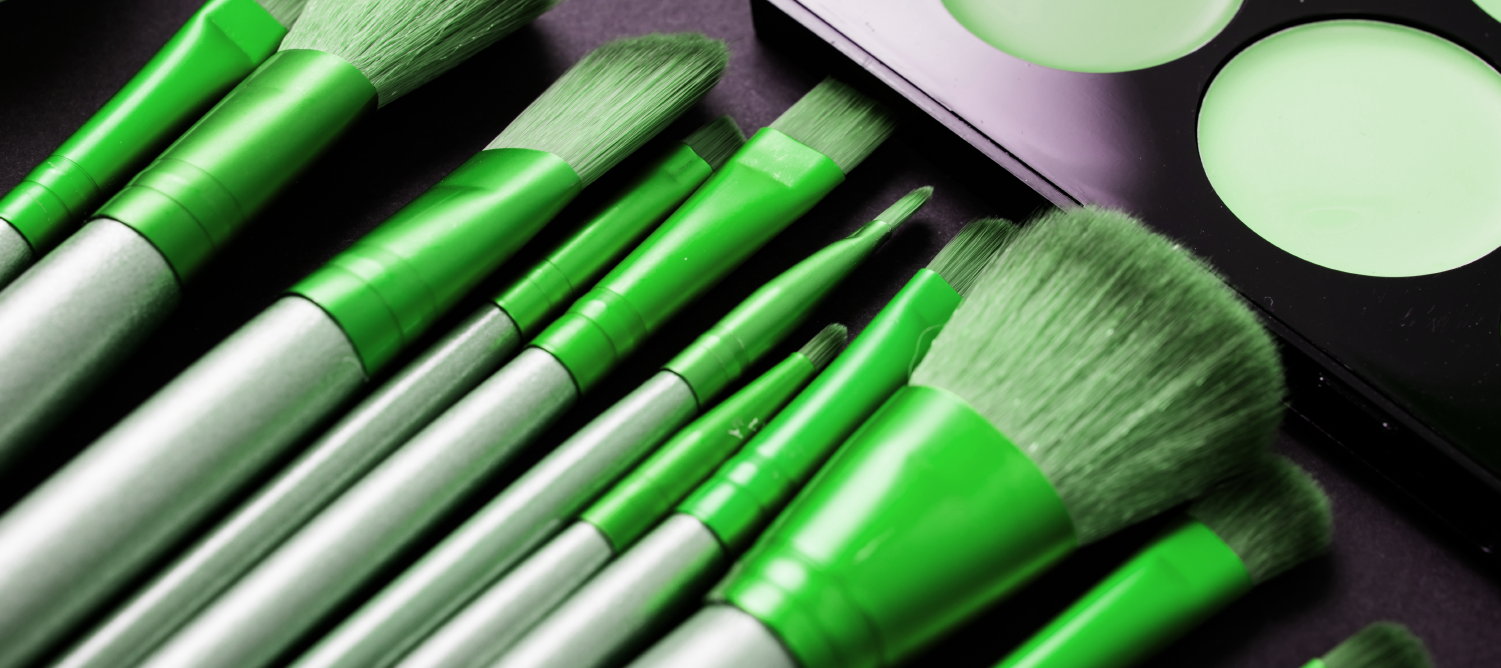
Americans love their mascara. So much so, that the beauty and cosmetics market is worth a staggering $49.2 billion.
That’s a lot of money circulating, but there’s a wide range of product price points between drugstore and luxury brands. Covergirl LashBlast Volume Mascara will cost you somewhere around $6 at Walgreens. Armani Beauty Eyes To Kill Lengthening Mascara will set you back $32, and you’ll have to head to a department store to get your hands on it.
But is the product worth the money? We wanted to find out if brands like Armani, Dior and NARS warrant a higher price tag – is the product actually better, do real people really prefer to spend more money on luxury, or are brands like Covergirl, Maybelline and L’Oreal just as good at keeping you cute?
Using Relative Insight’s text analytics platform, we ran a competitive comparison and evaluated reviews for various products by each brand – a total of 104,600 words – to determine if higher prices equal better reviews.
They don’t…
Both drugstore and luxury brands had about the same likelihood of positive reviews, containing words like ‘great’ and ‘best.’ The likelihood of negative evaluations was also the same.
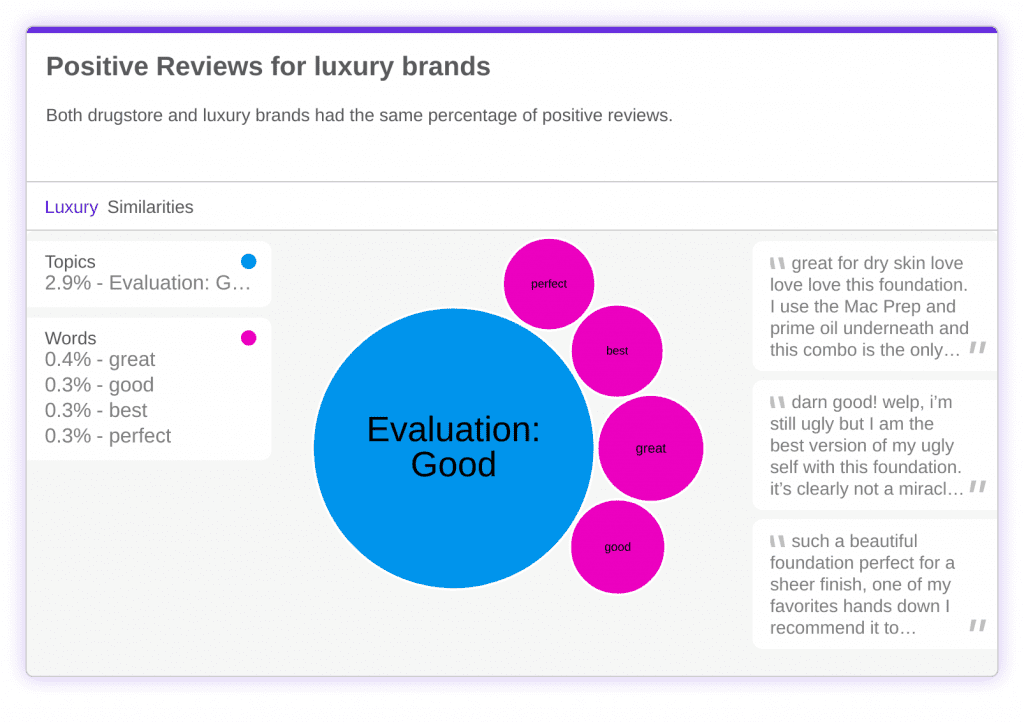
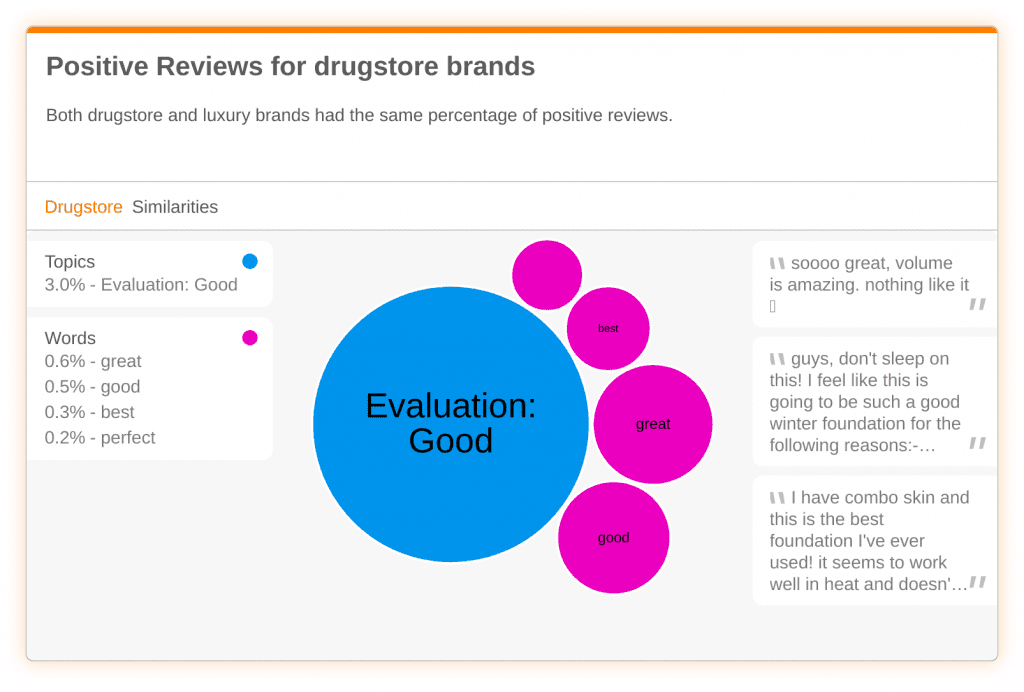
In this competitive comparison, although the percentage of positive and negative reviews was about equal, the product qualities valued by reviewers differed by price point.
Unsurprisingly, customers cared about price and heavily associated the two brand camps with their cost. Drugstore brands were praised for being ‘affordable’ and ‘cheap.’ Luxury reviewers were more likely to discuss the topic of money, but were split on whether the high prices were ‘worth’ it.

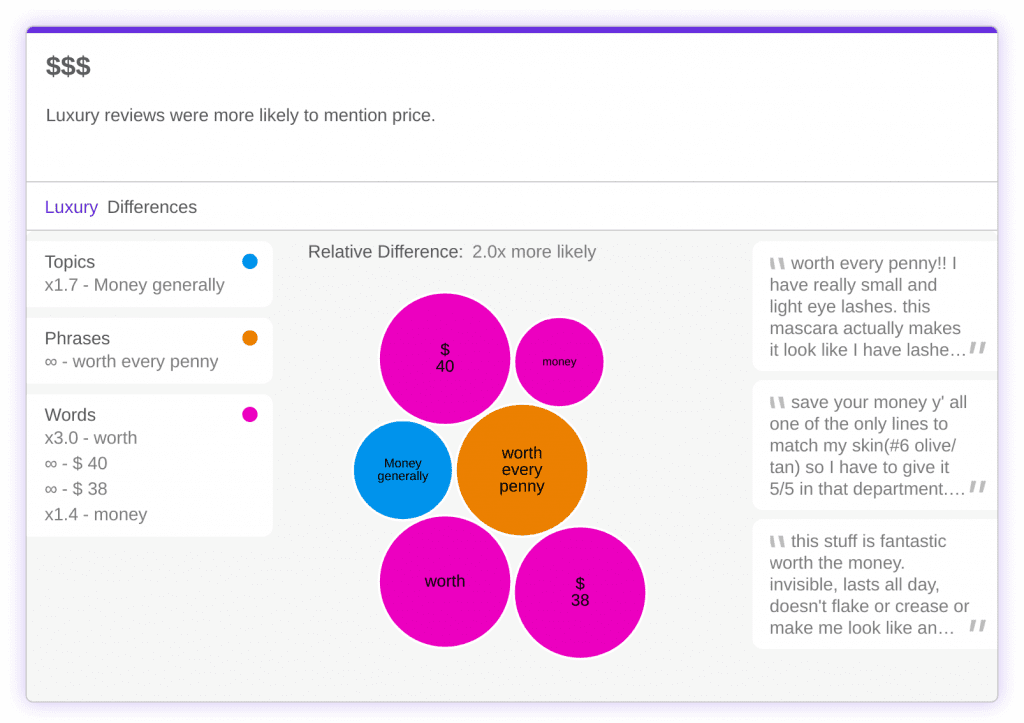
Should you just stop at CVS?
Drugstore reviewers were a thrifty bunch, often calling a low-priced product a ‘dupe’ for a more expensive brand. Popularized by YouTube and Instagram makeup artists, fiscally responsible makeup lovers will seek out the lower-priced equivalent of a popular luxury product.
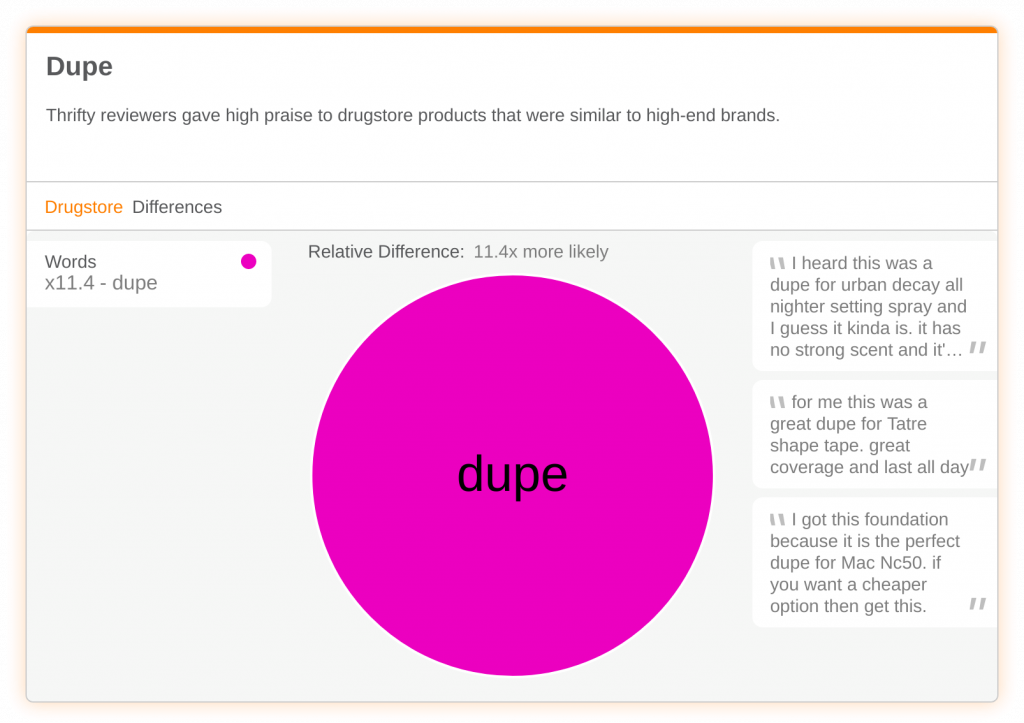
Customers of the drugstore brands valued practicality beyond just price. They wanted products that won’t break out sensitive skin and can last all day.
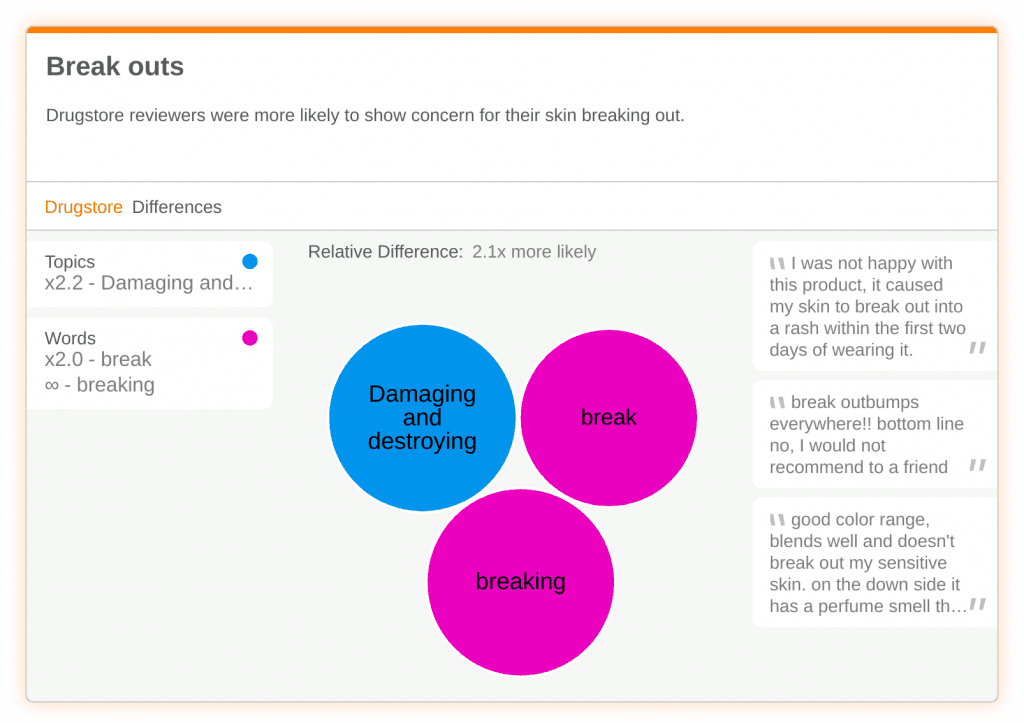
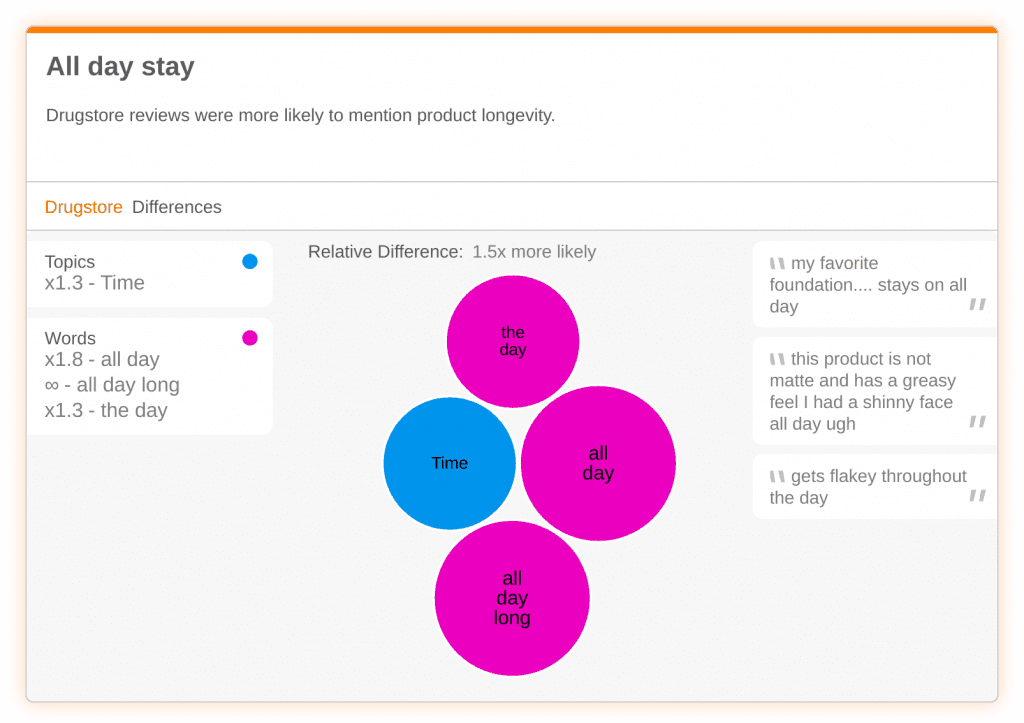
Why do people splurge?
Our competitive comparison revealed that higher prices and designer names definitely had an effect on product perception. Luxury brands were seen as ‘beautiful’ when it came to products, packaging and illuminating effects. Customers also appreciated the color and pigment of expensive products, which often cater to wider ranges of skin tones.
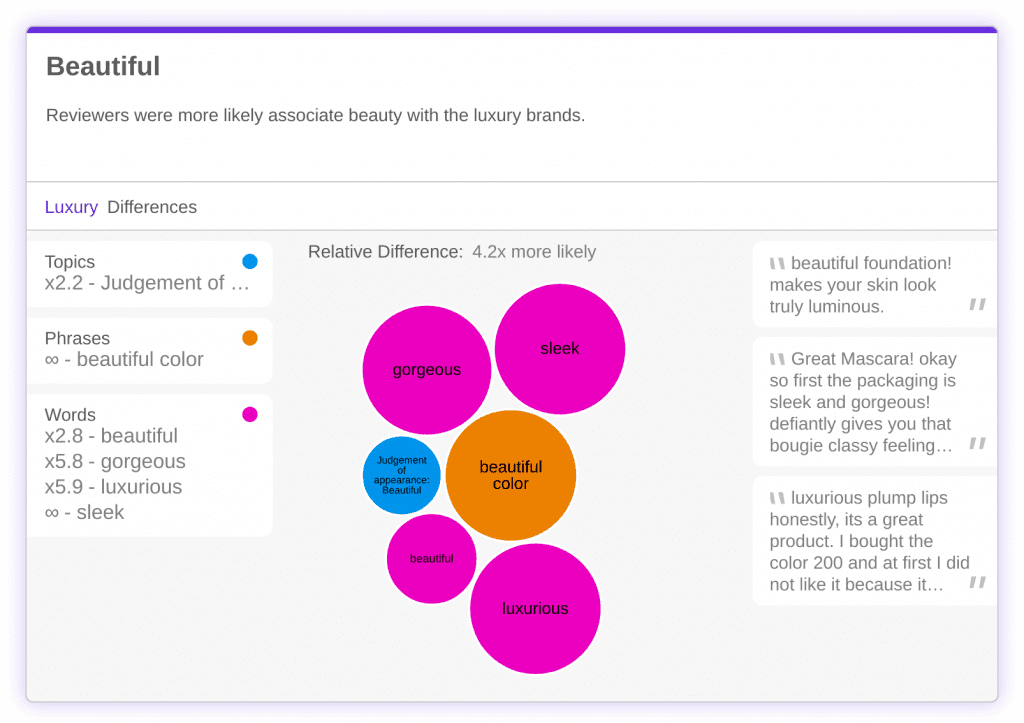
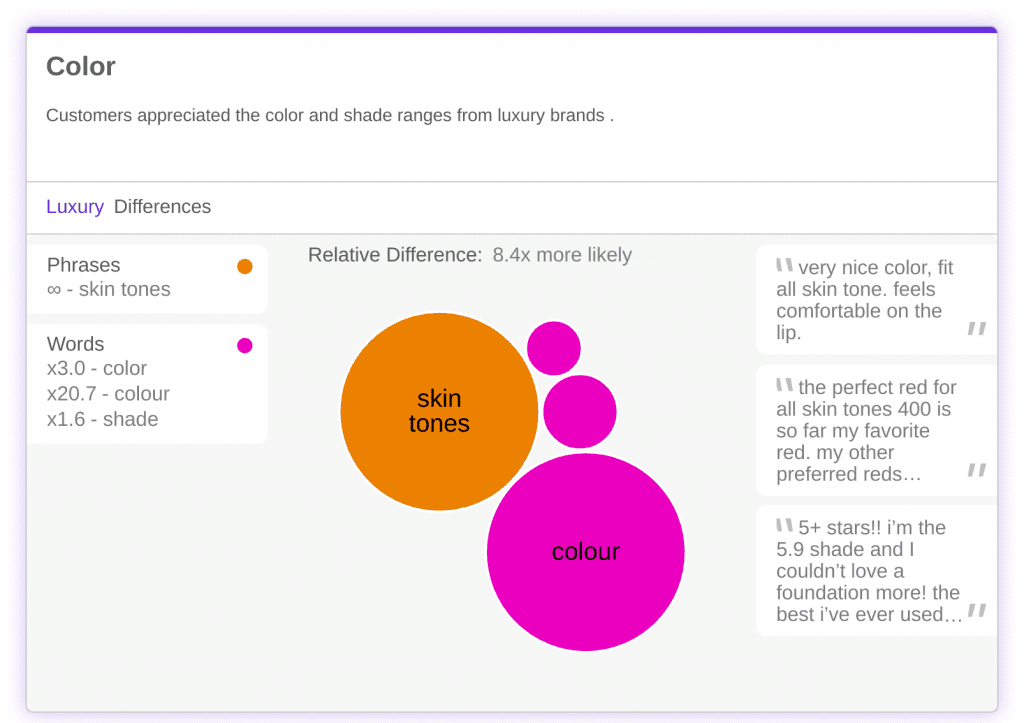
So, what’s the verdict?
Based on these reviews, it looks like affordable products in the cosmetics market will absolutely do the job, and people love them because they’re cheap. But the reason that people tend to spend more money on premium beauty is that they have a specific need – such as a larger range of color, or the perceived notion of better quality of ingredients or pigments.
Relative Insight can be used as a sophisticated tool for competitive comparison. We can analyze any data you throw our way. From social media to webcopy to review data to survey results – we can do it all!
